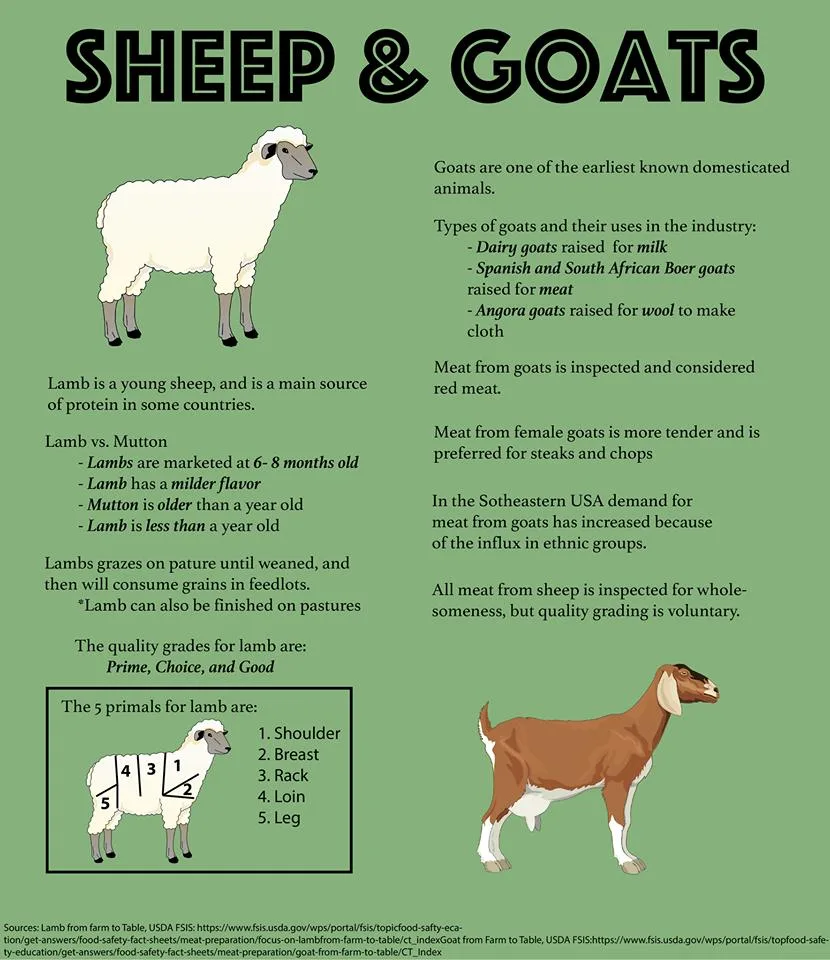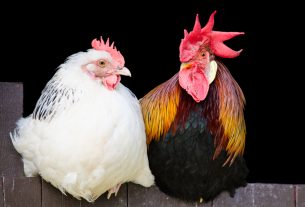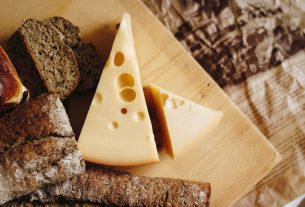Get ready to sink your teeth into a juicy debate that has been sizzling for centuries – the age-old battle of lamb vs mutton!
From succulent tenderness to wallet-friendly toughness, these terms represent not only different stages of sheep meat but also a clash of flavors and preferences that will leave you hungry for more.
So, gather around the culinary ring as we explore the dynamic world of lamb, hogget, and mutton, and discover why this battle goes beyond the plate.
lamb vs mutton
Lamb and mutton are terms used to describe the meat of domestic sheep.
Lamb refers to the meat of a sheep in its first year, while mutton is the meat from older sheep.
The main difference between the two is the age of the sheep and the tenderness of the meat.
Lamb is more expensive and preferred in Australia, Europe, New Zealand, and Canada, while mutton is more common in Middle Eastern, Indian, Mongolian, and South American cuisines.
Lamb has a lighter, pink color and a sweeter smell compared to the darker, red hue and pungent scent of mutton.
Overall, lamb is considered to have a better taste and a softer texture.
Key Points:
- Lamb and mutton are terms used to describe the meat of domestic sheep.
- Lamb refers to the meat of a sheep in its first year, while mutton is the meat from older sheep.
- The main difference between the two is the age of the sheep and the tenderness of the meat.
- Lamb is more expensive and preferred in Australia, Europe, New Zealand, and Canada.
- Mutton is more common in Middle Eastern, Indian, Mongolian, and South American cuisines.
- Lamb has a lighter, pink color and a sweeter smell compared to the darker, red hue and pungent scent of mutton.
lamb vs mutton – Watch Video
💡
Pro Tips:
1. In the culinary world, lamb refers to the meat from a sheep that is less than one year old, while mutton is the term used for the meat from a sheep aged over one year.
2. The tradition of eating lamb during Easter has its origins in early Christianity, where lamb symbolized the sacrificial nature of Jesus Christ, often referred to as the “Lamb of God.”
3. The meat from younger lambs is known for its tender texture and milder flavor, while mutton tends to have a stronger, gamier taste due to the sheep’s age and lifestyle.
4. The fat content in mutton is generally higher than in lamb, which gives mutton a richer flavor and makes it well-suited for slow cooking methods like braising or roasting.
5. While lamb is more popular in Western cuisines, mutton is widely enjoyed in many Middle Eastern, Indian, and North African dishes, where it is commonly used in flavorful curries and stews.
1. Lamb Vs Mutton: An Introduction
When discussing sheep meat, there are three terms commonly used to differentiate between the stages of a sheep’s life.
- Lamb refers to a sheep that is less than a year old. The meat obtained from a lamb is known as lamb meat.
- Hogget refers to the meat obtained from sheep that are in their second year of life.
- Mutton refers to the meat obtained from older sheep.
It should be noted that the terms hogget and sheep meat are not widely used outside of certain countries. Different countries have their own variations and definitions for these terms, which will be explored in more detail later in this article. Additionally, in some regions like South Asia and the Caribbean, the term “mutton” is often used to refer to goat meat rather than sheep meat.
2. Understanding Lamb, Hogget, And Mutton
Lamb, hogget, and mutton are different types of meat obtained from sheep of different ages. Younger lambs, typically between one and twelve months old, are known for their tender meat and mild flavor. As the sheep grow older, the meat becomes tougher and develops a stronger flavor.
The exact definitions and age ranges for lamb, hogget, and mutton can vary between countries. For example, in the United Kingdom, “hogget” refers to sheep that are between 11 and 24 months old. Australian butchers, on the other hand, use the term “hogget” for sheep that are between 13 and 24 months old.
It is worth mentioning that “hogget” is still used in farming and specialty butcher usage, but it is relatively rare to find it in British, Australian, and New Zealand supermarkets. The term “mutton” is generally used to refer to the meat of a female or castrated male sheep with more than two permanent incisors in wear.
3. Regional Differences In Terminology
The terminology and definitions for lamb, hogget, and mutton can vary significantly between different countries and regions.
- In the United States, the consumption of mutton has declined since World War II.
- Most sheep meat consumed in the US comes from animals between 12 and 14 months old, and it is labeled as “lamb.”
In the Indian subcontinent, the term “mutton” is commonly used for goat meat, reflecting the cultural preferences and traditions of the region.
- The goat population in these regions has been increasing, with over a third of the goat population slaughtered and sold as “mutton” each year.
It is also interesting to note that the domestic sheep population in India has been declining, with their primary use being for wool production rather than meat consumption.
– The consumption of mutton has declined in the United States since World War II.
– Most sheep meat consumed in the US comes from animals between 12 and 14 months old, labeled as “lamb”.
– In the Indian subcontinent, “mutton” refers to goat meat.
– Over a third of the goat population in the Indian subcontinent is slaughtered and sold as “mutton” each year.
-* The domestic sheep population in India has been declining, primarily used for wool production rather than meat consumption.
4. The Use Of “Mutton” In South Asia And The Caribbean
In regions such as South Asia and the Caribbean, the term “mutton” holds a different meaning. Unlike in other parts of the world where mutton refers to the meat of older sheep, in South Asia and the Caribbean, “mutton” often refers to goat meat.
This has historical and cultural roots, as goat meat has been a popular and widely available source of protein in these regions. Therefore, when you come across the term “mutton” in South Asian or Caribbean cuisine, it is essential to understand that it most likely refers to goat meat rather than sheep meat.
5. Pricing And Availability Of Lamb And Mutton
When it comes to pricing and availability, lamb tends to be the most expensive of the three types of sheep meat. This is primarily due to the fact that younger lambs are smaller and more tender, making them highly sought after by consumers.
On the other hand, mutton can be harder to find in many areas. Its stronger flavor and tougher texture make it less popular among certain demographics. However, it is worth noting that traditional cuisines in Middle Eastern, Indian, Mongolian, and South American cultures often embrace the flavors and textures of mutton.
In some countries, such as Australia, the term “prime lamb” is used to refer to lambs raised specifically for meat production. This designation ensures a certain quality and tenderness of the meat. Additionally, some regions have experienced variations in pricing depending on their local sheep populations and production methods.
- Lamb tends to be more expensive due to its tenderness.
- Mutton is less popular but has a strong flavor.
- Traditional cuisines in Middle Eastern, Indian, Mongolian, and South American cultures often use mutton.
- In Australia, “prime lamb” refers to lambs raised specifically for meat production.
- Pricing variations exist depending on local sheep populations and production methods.
6. The Definition Of “Prime Lamb”
The term “prime lamb” is primarily used in Australia to describe lambs raised specifically for meat production. These lambs undergo careful breeding and rearing processes to ensure optimal quality and tenderness in the meat.
The concept of “prime lamb” emphasizes the significance placed on specific breeding and feeding techniques in order to produce a higher quality product. These lambs are often fed specialized diets and receive extra care to enhance their flavor and tenderness.
By designating lambs as “prime,” consumers can have confidence in the quality and taste of the meat they are purchasing. This may result in slightly higher prices compared to non-prime lamb.
7. Variations In Definitions By Country
The definitions for lamb, hogget, and mutton can vary between countries, reflecting cultural, agricultural, and culinary traditions. In the United Kingdom, for example, “hogget” refers to animals that are between 11 and 24 months old.
In contrast, Australian butchers use the term “hogget” for sheep that are between 13 and 24 months old. These variations in definitions can lead to confusion and misunderstanding, particularly when comparing meat products across international boundaries.
Therefore, it is important to understand the specific definitions used in each country to make informed choices when purchasing or consuming lamb or sheep meat.
8. The Age And Tenderization Of Lamb And Mutton
The age of the sheep from which the meat is obtained plays a crucial role in determining the tenderness and flavors of lamb and mutton.
- Younger lambs, typically between one and six months old, are smaller and more tender in comparison to their older counterparts.
As sheep grow older, the connective tissues in their muscles become more developed, resulting in tougher meat. Mutton, obtained from sheep over two years old, tends to have a stronger flavor and a higher concentration of fatty acids.
-
Due to the higher presence of connective tissues, mutton and hogget are better suited for slow cooking methods such as braising or stewing. These methods help break down the collagen and render the meat tender and flavorful.
-
Bullet Point 1
- Bullet Point 2
- Bullet Point 3
Blockquote
9. Differences In Lamb And Mutton Consumption
The popularity and consumption of lamb and mutton can vary significantly by region and cultural preference.
- In countries like Australia, Europe, New Zealand, and Canada, lamb is the preferred choice of sheep meat.
In contrast, mutton has a stronger presence in Middle Eastern, Indian, Mongolian, and South American cuisines, where it is considered a delicacy, and its distinct flavors are celebrated.
Interestingly, lamb consumption in the United States has faced challenges, with many Americans reporting a distaste for lamb. However, it is important to note that this could be attributed to a mislabeling of mutton as lamb, leading to a negative perception of the meat.
Key Points:
- Lamb is popular in countries like Australia, Europe, New Zealand, and Canada.
- Mutton is favored in Middle Eastern, Indian, Mongolian, and South American cuisines.
- Some Americans may have a negative perception of lamb due to mislabeling.
10. Visual And Taste Differences Between Lamb And Mutton
Both visually and in terms of taste, lamb and mutton exhibit distinct differences. Raw lamb meat has a lighter, pink color, while mutton has a deep, dark red hue. This visual variation can be helpful in distinguishing between the two types of meat.
In terms of taste, lamb is often considered to be more tender and milder in flavor compared to mutton. The texture of lamb is softer, providing a more delicate mouthfeel. Mutton, on the other hand, has a stronger, gamier flavor that may require an acquired taste.
Additional factors that contribute to the taste differences include the higher concentration of fatty acids in mutton and the presence of more connective tissue, making mutton and hogget better suited for slow cooking methods to break down these components and enhance the flavor.
Understanding the differences between lamb, hogget, and mutton is essential when it comes to selecting the desired meat for culinary purposes. The terminology, definitions, pricing, and availability may vary depending on the region or country. Furthermore, visual and taste differences between lamb and mutton provide unique dining experiences catered to personal preferences and cultural traditions.
💡
You may need to know these questions about lamb vs mutton
Which is better mutton or lamb?
While many may favor the stronger flavor of mutton, lamb offers a healthier alternative. Lamb is a leaner meat, containing a higher amount of protein and less saturated fat than mutton. Choosing lamb over mutton can contribute to a balanced diet and help maintain a healthy lifestyle. However, both meats should still be consumed in moderation to ensure optimum health benefits.
Although mutton’s preferred strong flavor makes it a popular choice, the nutritional benefits of lamb cannot be ignored. Opting for leaner meats like lamb can support a balanced and healthy diet. Ultimately, the decision between mutton and lamb depends on personal taste preferences and health priorities.
What is the difference between lamb and mutton?
Lamb and mutton are both types of meat obtained from domestic sheep, but the key difference lies in the age of the sheep when the meat is harvested. Lamb refers to the meat of a young sheep, typically under one year old. It is tender and mild in flavor, making it popular in various cuisines worldwide. On the other hand, mutton is obtained from older sheep, usually over two years old. Due to its age, mutton has a stronger and more distinct flavor compared to lamb. This difference in taste makes mutton a favored choice for dishes that require a rich and robust flavor profile.
Is most lamb actually mutton?
Contrary to popular belief, most lamb is not actually mutton. Mutton refers to lamb that is harvested after a year of age, usually when they are no longer suitable for breeding. However, the majority of lamb available in the market comes from younger animals that are still in their prime breeding age. These younger lambs have tender and succulent meat, making them more desirable for consumption.
Is mutton a goat or sheep?
Mutton is a term that generally refers to the meat obtained from mature sheep in most countries. However, in South Asia, particularly in India, mutton can also be used as a term for meat obtained from goats. This regional difference in terminology highlights the cultural and linguistic variations when it comes to distinguishing between sheep and goat meats. In the United States and Europe, mutton specifically denotes sheep meat, while goat meat is known as just that – goat meat.
Reference source
https://truorganicbeef.com/blogs/beef-wiki/difference-between-lamb-and-mutton
https://www.linkedin.com/pulse/differences-between-mutton-lamb-goat-meat-pratik-maitra
https://en.wikipedia.org/wiki/Lamb_and_mutton
https://homesteadwisconsin.com/blog/2019/3/29/farm-no-lamb-meat-is-not-from-baby-lambs



